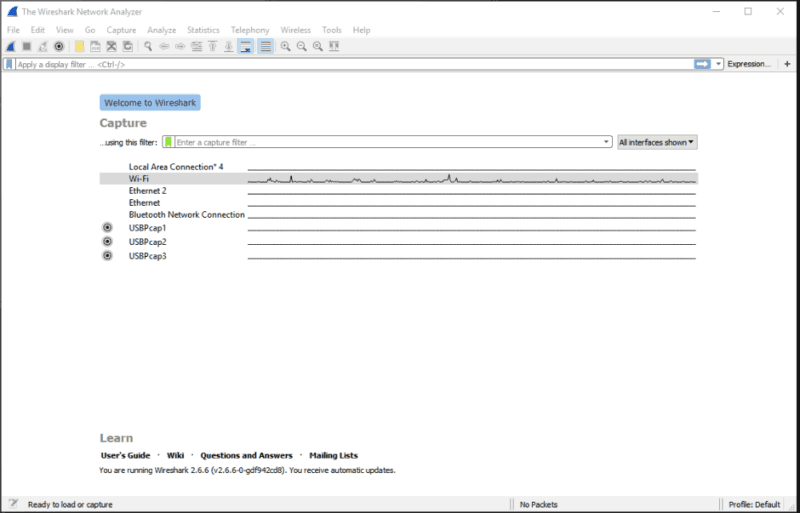
If we wanted to capture traffic on eth0, we could call it with this command: tshark -i eth0 To get this information, you will need to run the command below: # tshark –D


You may need to use sudo or root access in this case. It uses the pcap library to capture traffic from the first available network interface and displays a summary line on each received packet's standard output.īefore we start any capture, we need define to which interfaces on our server TShark can use. Without any options set, TShark works much like tcpdump.
Using wireshark install#
On Red Hat Enterprise Linux (RHEL) 8: dnf install wireshark Use cases On Red Hat Enterprise Linux (RHEL) 7: yum install wireshark Wireshark can be installed with the standard simple commands.
Using wireshark download#
Download RHEL 9 at no charge through the Red Hat Developer program.Output can be exported to XML, PostScript, CSV, or plain text.Coloring rules can be applied to the packet list for quick, intuitive analysis.Decryption support for many protocols, including IPsec, ISAKMP, Kerberos, SNMPv3, SSL/TLS, WEP, and WPA/WPA2.Live data can be read from Ethernet, IEEE 802.11, Bluetooth, USB, and others (depending on your platform).Capture files compressed with gzip can be decompressed on the fly.Read/write many different capture file formats: tcpdump (libpcap), Pcap NG, Cisco Secure IDS iplog, Microsoft Network Monitor, and many others.The most powerful display filters in the industry.Multi-platform: Runs on Windows, Linux, macOS, Solaris, FreeBSD, NetBSD, and many others.Deep inspection of hundreds of protocols, with more being added all the time.On its website, Wireshark describes its rich feature set as including the following: It supports the same options as Wireshark. TShark is a terminal-oriented version of Wireshark designed to capture and display packets when an interactive user interface isn't necessary or available. It enables you to see what's happening on your network at a microscopic level. It lets you interactively browse packet data from a live network or a previously saved capture file. Wireshark is cool - but in this case MNM is 'better'.Wireshark is a GUI network protocol analyzer. So far - regarding MSSQL-Traffic - or to be more precice TDS-Protocol this is the best tool I've come across so far.

Means it can understand the TDS-Protocoll fully.Īlso with an extension (so called experts) 'NmDecrypt' and the right certificates (including private keys) - it is possible to decrypt protocolls - quite nice for TDS which uses TLS INSIDE of TDS - no wonder - no one has really implemented that yet as a fully supported protocoll for wireshark ) Nonetheless wireshark as mentioned above would be sufficient to validate encryption and applied certificates on the wire itself. The MNM can even visualize the resultsets going over the wire - quite neat. This is also true for sql server connections. The tool is quite old and looks abandoned (havn't seen a newer release so far) but still does an good job and the grammar for defining new protocols is quite neat/interesting - so this still possess a lot of power for the future.Īnalysis Example - Recording is filtered for TDS - so the other packets are discared mostly:
Using wireshark windows#
Basically this is very similar to wireshark with the exception that some specific MS protocols have better parser and visualisation support than wireshark itself and obviously it would only run under windows -). There is another much underrated tool from Microsoft itself: 'Microsoft Network Monitor'. Note: Microsoft Message Analyzer was deprecated in late 2019, and is no longer available for download.
Using wireshark how to#
See also comment below this answer or the answer further down for how to use it! Edit (): Microsoft Network Monitor - has been replaced by Microsoft Message Analyzer - which serves the same purpose.


 0 kommentar(er)
0 kommentar(er)
